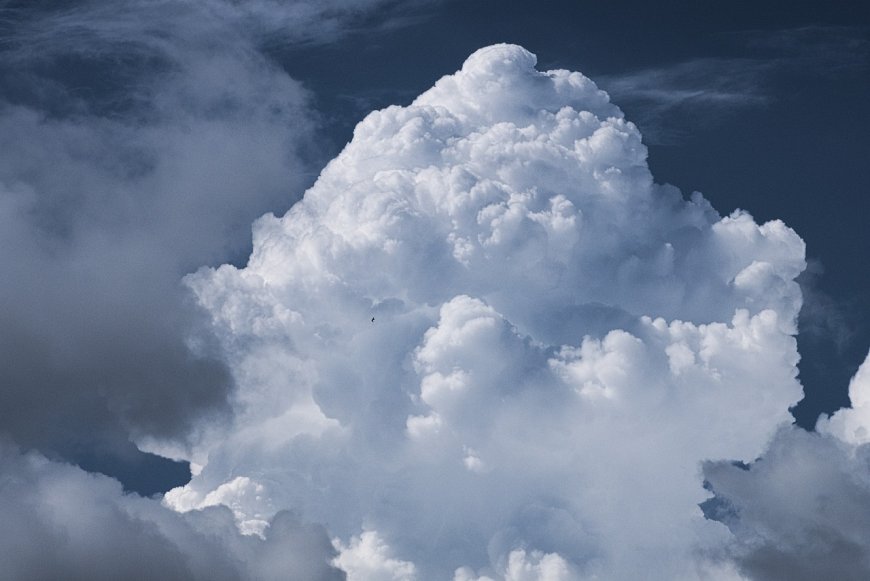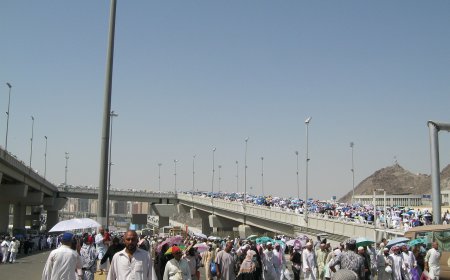How The Quran explain about climate change?
God sends the wind and the wind moves the clouds.

MOSAIC-INDONESIA.COM, JAKARTA -- Dry season in Indonesia has routinely occured since June. The shift in the hot seassion is predicted until the Bureau of Meteorology, Climatology and Geophysics (BMKG) revealed that the peak of the hot season will be happening in July to August 2024. In fact, today there are still many areas in Indonesia that are flooded with rain.
BMKG Deputy Meteorology Officer Guswanto explained that most areas in Indonesia have entered the dry season this July. Nevertheless, it is necessary to clarify that even if the status is dry season does not mean that it will not rain at all. Only, he said, the intensity of precipitation was below 50 mm per base.
“It is true that most areas of Indonesia occurred in July and August 2024, which is 77.27%, of which 63.95% of the duration of the dry season is predicted to occur for 3 to 15 days (a time span of 1 basis of ten days). Although this does not mean that in the dry period there is no rain at all, but there is rain even if the range is below 50 mm/base,” Guswanto said in a written statement in Jakarta, Friday (4/7/2024).

Guswanto said that in the next week, there is still a potential for significant increase in rainfall in a number of areas of Indonesia. This phenomenon is due to the atmospheric dynamics of a fairly significant regional - global scale. Among them, the Madden Julian Oscillation (MJO), Kelvin and Rossby Equatorial phenomena were monitored in most parts of Java, Borneo, Sulawesi, the Maluku Islands, and most of Papua. In addition, the warm sea surface temperature in the waters around Indonesia contributes to providing conditions that support the growth of significant rain clouds in the Indonesian region.
Such weather shifts can be explained by meteorological science, which is the scientific study of the atmosphere and the various processes that take place in it. Meteorology is a discipline that produces a variety of scientific studies, such as climatology (the study of climate), hydrology, vegetation strata, botany, zoology, and biogeography. Therefore, in this discipline it will be talked about many things related to the Earth's atmosphere, such as light, air temperature, direction of wind movement, cloud formation, electromagnetic radiation, air pressure, and so on.
Excerpted from Tafsir Quran Tematik tentang Pelestarian Lingkungan published by Indonesia's Ministry of Religion, some of Quran verses relating to meteorology, among others; Surah Al-A'raḥf 7:57, An-nahl 16:65, Al-Mu'minuṇn 23:18, An-Nuṣr 24:43, Al-Furqaān 25:48-50, ar-Ruḥm 30:48, As-Sajadah 32:27, Fushilat 41:39 and al-Mulk 67:30. All of these verses are chategorizesd as Makkiyyah (verses which had been revealed in Makkah), except An-Nur 24:43 which is the verse of Madaniyyah (verses which had been revealed in Madinah).

In Surah ar-Rum 30:48, for example, Allah subhanahu wa taala says:“It is God who sends the wind, and the wind moves the clouds, and God spreads them in the sky according to His will, and makes them clumps, and you see the rain coming out of its cracks, and when He sends it down to His servants whom His wills, they suddenly rejoice.” (Ar-Rum 30:48)
In this verse, the Qur'an has hinted at the processes that take place in the atmosphere before the rain falls. It starts with the clouds moving (with the help of the wind), then the clouds stretch, then clump, and rain falls.
While in Surah an-Nur 24:43, with regard to the phenomenon of rain, there is a gesture that is not exactly the same as that in Surah ar-Ruḥm/30:48 above. In Surah an-Nur Allah Ta'ala says:
“Do you not see that Allah sends down the clouds, then gathers them between them, and makes them overflow, and it appears to you that it rains out of the cracks, and Allah sends down ice from the heavens, from the mountains, so He is cast down. The ice is to whom He wills and turns from whom He wills. The flash of the cloud almost took away the sight. (An-Nur/24:43)
There is a slight complementary difference between the two verses about the process of rain falling above, where in Surah An-Nur 24:43 the process can be summarized as follows: the clouds move, then gather, then clump/overlap, and then the rain/snow falls on the earth. It can be said that, if Surah ar-Rum 30:48 describes the classification of clouds, then Surah an-Nur 24:43 describes the process of falling ice grains (precipitation).
The Earth inhabited by humans is enveloped by an atmosphere, which we commonly call the air layer (which when moving is called wind). The atmosphere covers an area that starts from the Earth's surface to about 560 km above the Earth's surface. The question is: what factors cause the air that is in that layer of the atmosphere to move so that it becomes wind? This is where the role of sunlight creates air pressure, so that the air moves with the wind flow from a place of high pressure to a place of low pressure, or from an area of low temperature/temperature to a region of high temperature. Therefore, it is no exaggeration that Prof. Manshur Hasbennabi, a professor of physics at the University of 'Ainus Shams, Egypt, refers to the sun as a “wind motor” (diṇāmuḥ ar-riyaḥ), based on the words of Allah subh aḥ nahu wa ta' aḥ l aḥ in Surah an-Naba ′ 78:13-14. "And We made a bright plate (the sun), and We sent down from the clouds a great pouring rain.” (an- Naba′ 78:13-14)
Ar-Razi (one of the Muslim scholar) interpret that the word wahhaja (Waja'alna siraajawwahhaja) in the 13th verse above comes from madar al-wahj. This word has the meaning, among other things, of 'heat of fire and sun' (arr an-naṣr wasy-syams), so wahhaja can be understood as the sun having a very high degree of heat. The word mu'shirath in the following verse (wa anzalnaa minal mu'shirathi maa an tsajjaa jaa) based on one of the stories of Ibn 'Abbas, Mujaḥhid, Muqaḥtil, and Qatadah — means 'the wind that drives the clouds.
Thus, verses 13 and 14 of Surah an-Naba above provide a scientific fact that the sun's rays whose surface heat reaches 6000 degrees and the heat at the center reaches 30 million degrees, which produce energy in the form of 9% ultraviolet, 46% light, and 45% infrared, called tsirajaaw-wahhaja (radiant or glowing plate). The Sun contains light and heat simultaneously which is perfectly suited to the conditions of the Earth's atmosphere. It is this light and heat that creates air pressure so that it moves into a wind that serves to carry and dribble the water vapor gathered upward into clouds to then become rain. .







